Aliens: Dark Descent review
The Aliens universe can almost be likened to a sitcom at this point. Not because it’s particularly funny, but because nothing ever seems to advance significantly, and characters seem to learn nothing. How many times has someone in this universe stuck their face in something clearly dangerous, or gone creeping around in the dark alone expecting to not get the back of their skull ventilated by a lurking monstrosity? Aliens: Dark Descent is no different in this regard, but that’s the price you pay for something this painstakingly respectful of the source material.
Let’s be clear for a moment, though: this is very possibly the best Aliens game we’ve ever had. It knocks spots off titles like Colonial Marines and Fireteam Elite. Dark Descent is to Aliens what Isolation is to Alien, and that means both good and bad news – though mostly good.
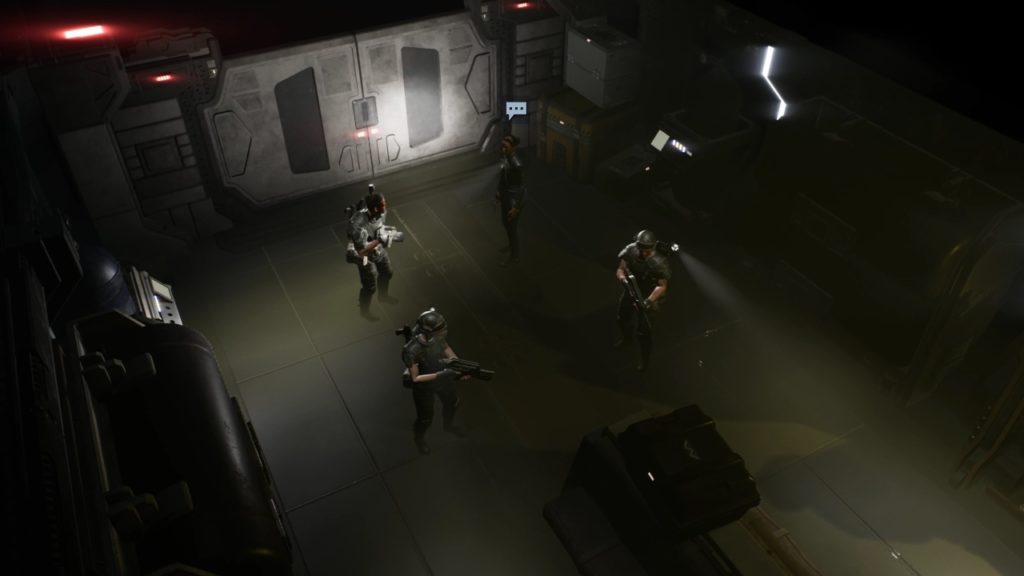
For example, it still paints the Colonial Marines as tough but dumb hombres more likely to charge headlong into the unknown than analyse a situation for five minutes first. It still has a plot that relies on people making the worst possible decision at every moment. Case in point is how Aliens: Dark Descent begins. You play initially as Maeko Hayes, a Weyland-Yutani administrator aboard Pioneer Station, in orbit around the planet Lethe. When a xenomorph and a bunch of face huggers get loose aboard the station, Hayes’ first thought isn’t to run like hell or even sound a station-wide alarm. Instead, she goes and investigates. Alone. Without a gun.
It’s in service to the gameplay, of course. This section acts as a tutorial as you control Hayes around the darkened corridors towards the main control mainframe, looking for a way to stop the aliens getting off Pioneer station and down to the surface of Lethe. Sadly, it all goes completely arse-up and Pioneer is all but destroyed, as is the USS Otago, a huge military transport vessel analogous to the Sulaco, which crashes on Lethe along with Hayes and Jonas Harper, a marine sergeant thrust into a position of leadership because everyone above him is dead. They soon learn that Lethe is already infested, and if you ever want to get out you’ll need to work with Harper’s surviving marines, physicians and engineers to salvage parts and get the Otago starside again.
It’s a classic Aliens set up, and Lethe may as well be LV-426 based on the way it looks and feels. But it’s deliberate, evoking the sense that all of Weyland-Yutani’s facilities are churned out on a production line with little thought for the people who will live and work in them. What’s crucial here though is atmosphere, and Dark Descent nails the ambience of James Cameron’s 1986 masterpiece at every turn. Much of the game takes place in the corridors of various colony settlements, abandoned mines, refineries, science facilities, off-planet locations, and even the windblown surface of Lethe itself.
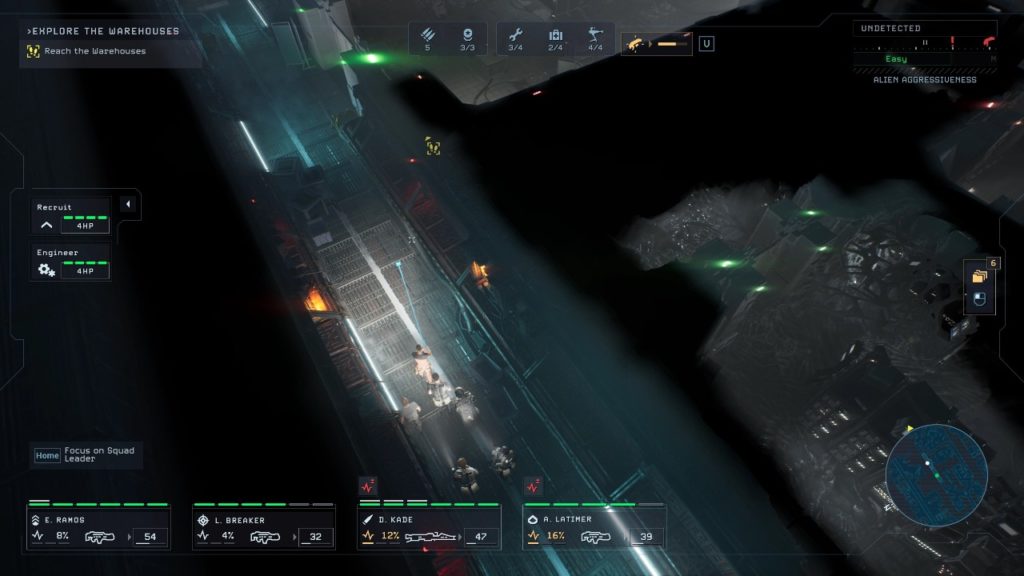
What makes Dark Descent feel so authentic though is the marines themselves. Ostensibly you are Hayes, directing the squad from the Otago while Harper provides support from the ARC. This allows him to move around the map at your command so you can ferry marines to the objectives, pick up survivors, and provide ground support with the ARC’s huge pulse cannons. While the hub activity between missions feels very XCOM, the missions themselves actually remind me more of Red Solstice 2: Survivors, eschewing turn-based tactics for slow-burn exploration and creeping terror interspersed with fast-paced, desperate firefights against the Xenomorphs and… other enemies.
Having played every Aliens game back to the ZX Spectrum version, I wasn’t prepared for Dark Descent to be as tense as it is. Usually these are games designed around shooting galleries, as Aliens gallop at you in groups eagre to choke down your hot lead. While they do their fair share of zerging here, most of the time you’ll be dealing with single drones that can pop out of vents or appear on your motion tracker, hoping you don’t make enough noise to attract more. When higher category Xenomorphs enter the fray, you may well spend some time playing cat and mouse to avoid them altogether.
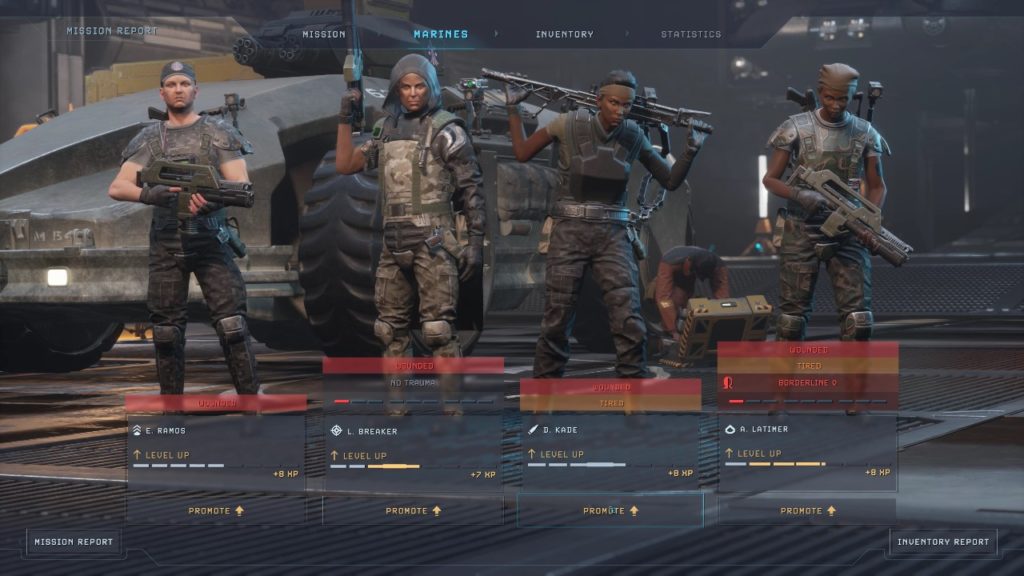
The mission structure is interesting though. There are multiple objectives in each area, and you’re sometimes allowed to complete them in whichever order you choose. Because your marines are only human, they will get tired, scared, and stressed out. You have limited medkits containing bandages and mood stabilisers, but once your marines are in a state of panic you need to get out as quickly as you can. At this point they become irrational, missing shots and fumbling reloads, and if they’re tired and exhausted they can be dragged away by drones and never seen again. Worse, they will develop traumas such as pyrophobia, paranoia, and PTSD that you’ll need to treat case by case.
Of course, you have more than a few tricks up your sleeves, too. You can deploy sentry guns, mines, or pull out flamethrowers and handy shotguns for close encounters. As with XCOM, marines who survive missions will earn XP, which means you can promote them and alter their class. Snipers, medics, teckers, officers, smartgunners; all are available and critical on mission. Bear in mind, though, that death is permanent in Aliens: Dark Descent. Lose a marine and don’t have a good autosave to reload, and they’re gone forever. You can’t save-scum as all saves are automatic, and it can get incredibly hectic when a horde attacks you. Sometimes you’ll need to buy yourself some time by welding a door, which can also grant you a shelter to relieve stress and, with the right perks, heal or resupply your squad.
What makes it tactical is that everything requires a currency. Medkits to heal, tools to weld doors and hack terminals, Command Points to use shotguns, flamethrowers, mines – or to lay down suppressive fire, which is like a mobile version of the overwatch mechanic. As you move around mission areas a counter will tick away until the Xenomorphs come for you en masse. When this happens, deploy whatever defences you have and dig in. You can either slow or pause time for breathing room, but every time this happens it feels desperate and terrifying. If you’re unprepared or all in strung-out shape, you’re better off leaving and coming back later.
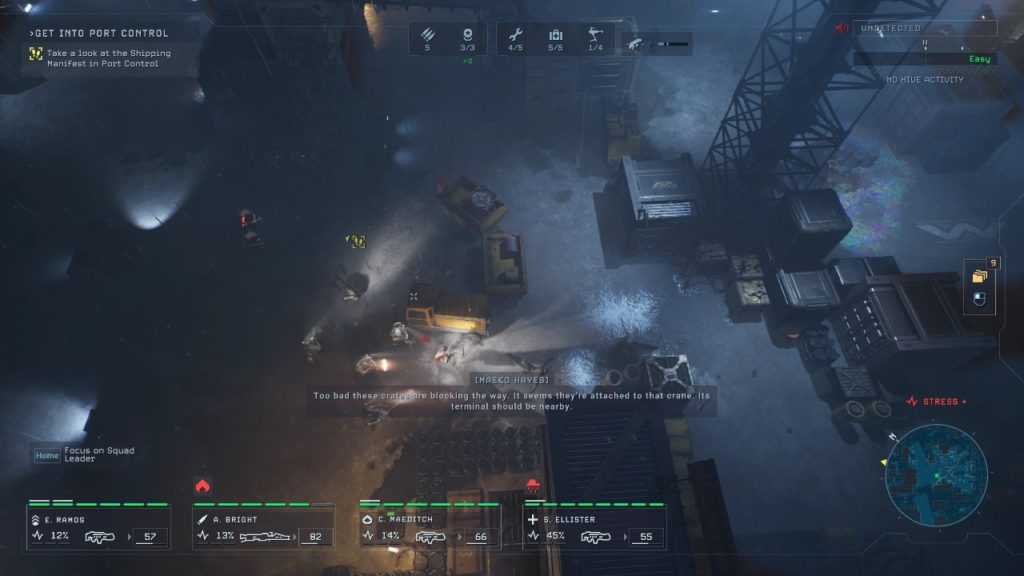
The story weaves in and out of your missions, and in the central hub you’ll upgrade, train and customise your soldiers, develop new weapons, research the xenomorph threat, and treat the wounded and traumatised in the medibay or therapy room. In order to make things happen you need to advance the day, and each day that passes sees the infestation escalate. This is your Death Clock, and when time is up, it’s game over, man.
So you’ll develop strategies that see you get in, complete objectives, and get out, salvaging as many supplies, medkits and ammo packs as you can, ready to refresh and try again the next day – but always with the knowledge that every dalliance brings you a step closer to destruction. Of course, completing major story objectives can knock the infestation level down a little, as can some of the random choice-based events that occur whenever you advance time.
That being said, the story will move on when you complete certain tasks. It tells an interesting tale too, dealing with not only the xenomorph threat but also secrets hidden in Hayes’ and Harper’s individual pasts, as well as a doomsday cult that worships the alien. It’s pretty par for the universe, but I found myself engaged with the two leads throughout. And your marines, too, become familiar to you as you play, so that when you lose a character you’ve named and shaped for hours, it hits harder.
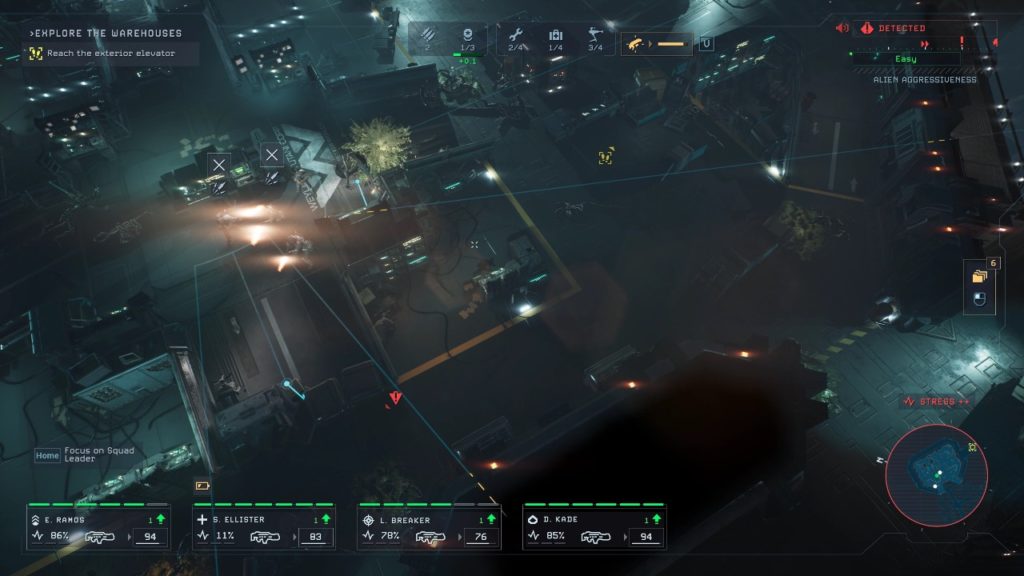
Aliens: Dark Descent does struggle a little in the visual department, however. While environments and animations are great, the character models aren’t so impressive close up. The lip-synching in cutscenes is also weird, and characters have a bizarre rubber mask look. One guy in the first few scenes just looks like a Spitting Image puppet of Elton John. It’s a little weird, but not a major issue as you’re rarely dealing with characters up close.
The audio kind of makes up for it, too. From the iconic chitter of the M41-A Pulse Rifle to the beep of the motion tracker, Dark Descent nails the sound design throughout. There are sounds that have come to be considered quintessential to the franchise and they’re all present here. By God though, does it need some more dialogue lines in mission. You can only hear “Come on, team!” so many times before it starts to annoy.
But Aliens: Dark Descent is more than just another game wearing Aliens clothes and mimicking its catcalls. It’s a genuinely tense experience that strives to make use of the license at every opportunity. The way your marines can retreat while shooting, the lines of dialogue lifted from the movie, and the look and feel of the environments, weapons, and enemies, all combine to produce something incredibly faithful to the source.
It’s only really let down by glitches that may well be patched out in launch week but which did hamper my enjoyment a little. Occasional crashes, progress bugs, visual glitches, and noticeable framerate slowdown and texture pop-in plagued me throughout, and I dearly hope Tindalos gets it sorted sooner rather than later.
Anyone waiting for a genuinely good video game adaptation of Aliens can finally breathe a sigh of relief, though. Far more than any FPS or squad-based shooter, Dark Descent feels like something worthy of the name. It’s not perfect, of course; the technical issues require swift attention, and there are moments of frustration thanks to your squad’s occasional clumsy pathfinding, or sudden spikes in difficulty that you just can’t see coming, but it’s also one of the most immersive and exciting tactical shooters I’ve played, and a worthy successor and tribute to Cameron’s sci-fi classic.




